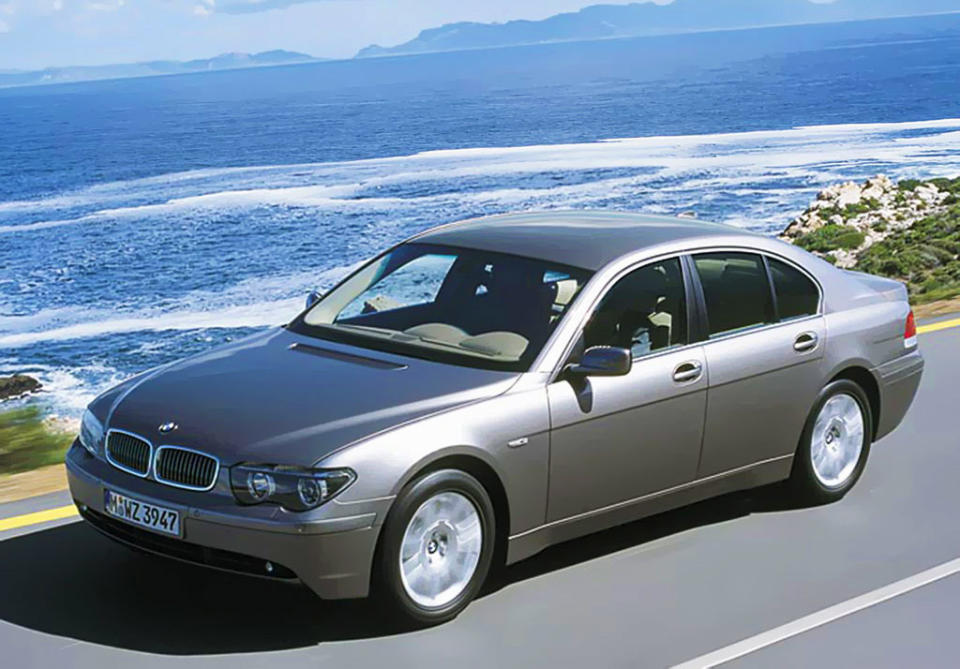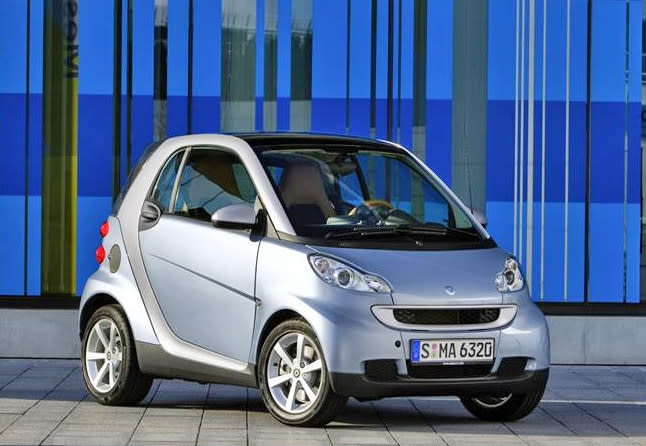10 models that changed the look of cars

MORE AT POPULAR MECHANICS
The 1941 Willys MB not only served our troops during World War II, but also gave rise to the SUV, a vehicle type that would boom for years to come. The midengined Lamborghini Miura of the 1960s set a blueprint for supercars through the '70s and '80s. But we don't have to travel back a half-century to find cars that changed the automotive design landscape. Here are ten modern cars that rocked the status quo and inspired serious changes in the new cars we see today.

2002 BMW 7 Series
Few modern car designs are as despised as the 2002 BMW 7 Series. That year, BMW's flagship sedan traded the suave lines and swagger of the previous E38 generation for blunt and blocky shapes. It had lines above its headlights that looked like eyebrows. The trunklid, nicknamed the Bangle butt after BMW designer Chris Bangle, appeared to be an afterthought to increase luggage space. And inside the cockpit was the dreaded iDrive, a complex infotainment system controlled by a frustrating rotary knob.
But as much as everyone disliked that car, its design inspired other carmakers to move in that direction, creating more elegant versions of Bangle's work. Lexus and Mercedes-Benz, for example, adopted a version of the Bangle butt. All luxury cars have grown to the same large, blocky proportions pioneered on that BMW, in part to meet today's crash standards and provide increased visibility for the driver. Look inside any Audi, Mercedes, or Lexus these days and you'll find their version of iDrive.
The 2002 BMW 7 Series was an ugly duck. But Bangle's design, for better or worse, pushed sedan design to where it is today.

2003 Scion xB
At the dawn of the millennium, Toyota realized its buyers were getting older—much older. Kids didn't want to own a Toyota—it was their parents' car. So Toyota created Scion as the company's "youth brand" in the U.S.
Ten years on, Scion's overall success can be debated. But what can't be questioned is the significance of Scion's first car—the original xB. Scion imported Toyota's Japanese domestic market bB and sold it as the Scion xB, a hip and youthful people mover. Kids thought it was dope (that's right, I said "dope"—it was 2003 after all), while older folks wondered why a small boxy car would appeal to anyone.
The xB was a hit. It inspired Nissan to bring over its Cube and Kia to build its own youthful box, the Soul. It also proved that sleek lines and big horsepower numbers weren't the only ways to get younger buyers into dealerships. The xB could be highly customizable with parts and equipment available right from the Scion store—including electronics. Today automakers have found that the electronic interface has become a major driver for people to buy specific cars. That's why even the most inexpensive cars, like Chevy's new Spark, have been designed with leading-edge infotainment systems.

2005 Ford Mustang
By 2005 retro car designs were emerging from all sectors of the auto industry. But it was the redesign of the Ford Mustang that re-created the American muscle car. The Mustang faithful had waited years for a tribute to the original 'Stangs of the 1960s. Ford's remake brought forward just the right design cues to recall the past and melded them into a body that looked modern at the same time. It was brilliant work.
In 2005 there wasn't much competition for the Mustang. A year earlier GM imported a rather boring-looking Australian coupe with a great chassis and dubbed it the new Pontiac GTO. It was faster than the Mustang, but compared with the 'Stang's retro design, the GTO was a dud and it flopped. However, just as the original 1964 Ford Mustang had inspired the ponycars from Chevy (1967 Camaro) and Dodge (1970 Challenger), the 2005 Mustang sent domestic designers to their sketchpads to reimagine these muscle cars once again. By 2009 we had retro-designed, high-horsepower machines from Chevy and Dodge. Today these models have proliferated into extreme performance versions as well as basic six-cylinder models.
Our friends at Car and Driver, have pegged 2015 for a relaunch of another classic muscle-car nameplate—the Barracuda.

1998 Audi TT
When the original TT coupe launched in the late 1990s, it was as if an Audi concept car had been dropped onto dealership lots. The TT's tight lines and clean, undecorated profile looked fresh—unlike anything else on the market. And that's a very difficult task to accomplish, especially for a sports coupe. Overnight it made Audi the company to watch for serious design.
It's hard to imagine a single modern car that has so thoroughly moved the design of its own company as much as the Audi TT. For 15 years Audi has been borrowing from the design language it pioneered with that car, and the brand's popularity has soared over that time, based in part on Audi's unique style. Did the original TT inspire those other cars? We're sure of it. At the very least, it's probably not a coincidence that you still see new cars wearing the same circular interior air vents that the TT brought back into fashion.


 Yahoo Autos
Yahoo Autos 
